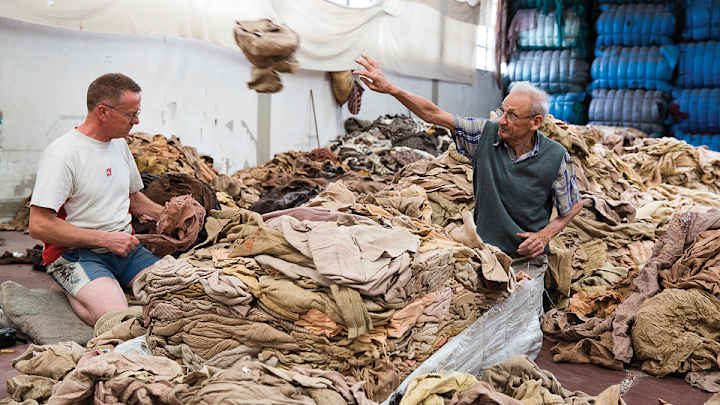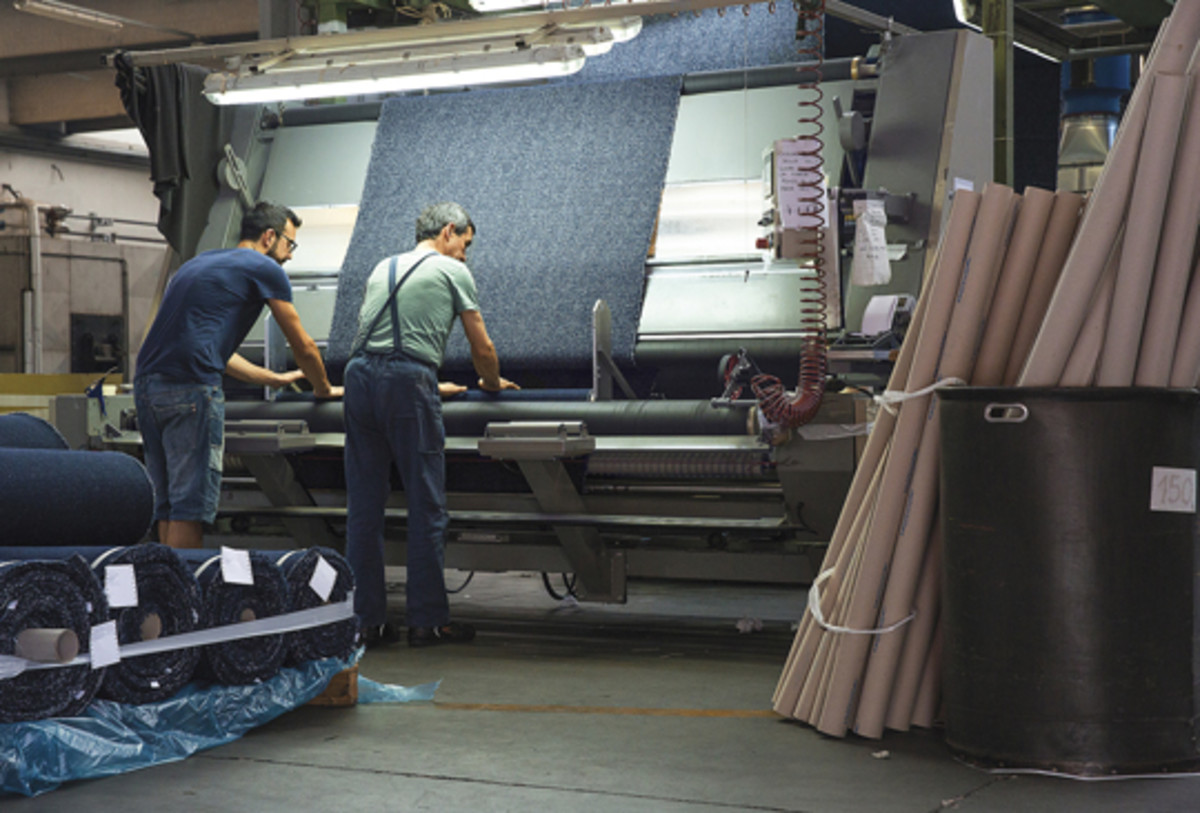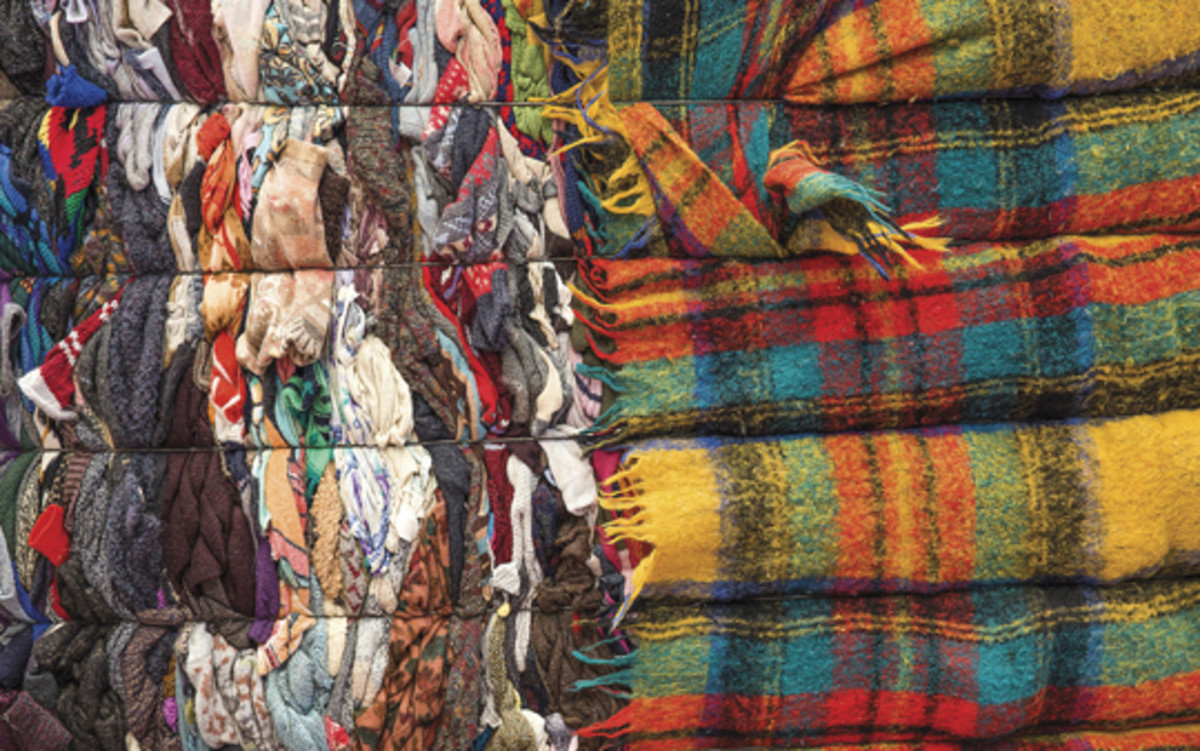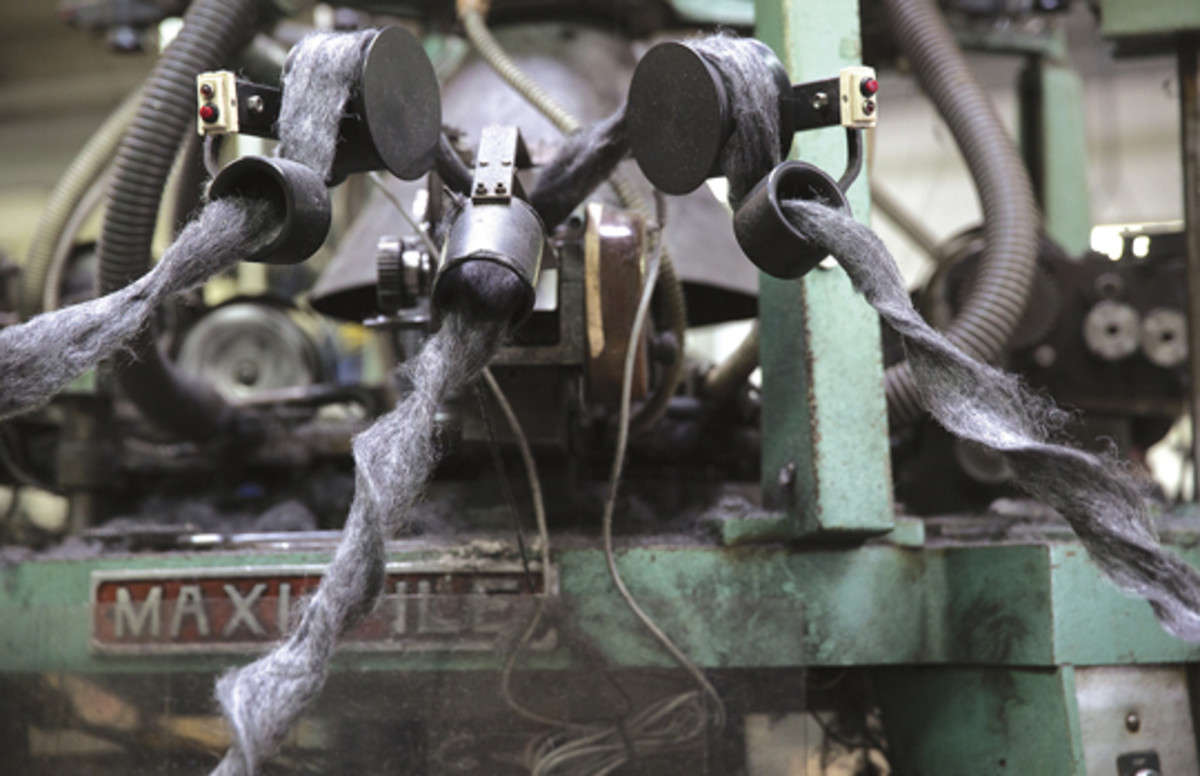Making materials matter: Patagonia launches Earth-loving line

Patagonia had spent a decade collecting its old down jackets. Hoping to keep the precious down from landfills, the company stockpiled the used, damaged and tired coats. Stockpiling and stockpiling until designer and artisan Natalie Chanin helped the company realize a way to repurpose the down.
And if Patagonia could reuse down, what about other materials? The down dilemma led to an entire new sportswear line, dubbed Truth to Materials, that reclaimed raw materials for sustainable manufacturing in the sports world. Sure, there was down. Then wool. And cashmere. Even cotton.
“As consumers we demanded more transparency in our food and the understanding behind what we eat, but we still have a ways to go in the apparel industry,” Helena Barbour, Patagonia’s director for sportswear, tells Edge. “We don’t know the conditions of the people who worked on it, the fabric or process and whether they are environmentally detrimental.”

Patagonia had dabbled in reclaiming wool in the past, but the Truth to Material project forced everyone in the California-based company, from designers to those sourcing materials, to rethink the way they create garments, right down to the process for coloring yarn.
“It started out very broadly, what can we explore that is reclaimed,” Barbour says. “It is a little out of the box for us.”
During the endeavor, Barbour says, the biggest challenge was creating a product of the same quality as any other Patagonia piece, which meant some promising pieces didn’t make the final cut. But what did make it tells a few different stories.
The unusable down coats were destined for a landfill until Chanin made them into down scarves. The reclaimed wool used for coats came from discarded sweaters. The sweaters were shred into usable fiber in an Italian factory and mixed with polyester and nylon for strength.

For the cashmere, Patagonia used undyed cashmere hand-harvested by Mongolian goat herders. (Every good sustainable apparel story has a Mongolian goat herder.) The colors of the cashmere yarns—whites, browns and tans—were as nature intended and didn’t require fiber bleaching, allowing for a smaller environmental impact and a softer product in a completely new manufacturing process.
The growing, spinning and weaving of cotton in factories in China and Malaysia leaves plenty of cotton on a factory cutting-room floor. Patagonia reached an agreement with one of the largest garment manufacturers in the world in 2011 to have the TAL Group sweep their floors, saving hundreds of tons of cotton from the landfill. The once-useless scrap was spun into fully functional fabrics, neither bleached nor dyed, and used raw in Patagonia’s Truth line.
While wonderful boutique apparel manufacturers have taken the sustainable garment-making concept to the public, Patagonia is the first to scale the concept to such a level.

“I think the next step is to expand beyond this limited collection and allow these advances to infuse our global lines,” Barbour says, adding that technical products should be the next to receive the Truth treatment. “I think, for me, it is disappointing I am not seeing more of this. I think with all of these stories it is a way of educating the consumer and I think the tide will turn as people get more interested in fabrics and process and where clothes come from.”
Barbour says the goal isn’t for Patagonia to corner the market on sustainable product. Indeed, the company has chosen to share the manufacturing processes with others, not with a goal of exclusivity, but to inspire other manufacturers. Maybe even to shift the way the consumer thinks about fabric, whether wool, cotton or down.
Tim Newcomb covers stadiums, design and gear for Sports Illustrated. Follow him on Twitter at @tdnewcomb.
